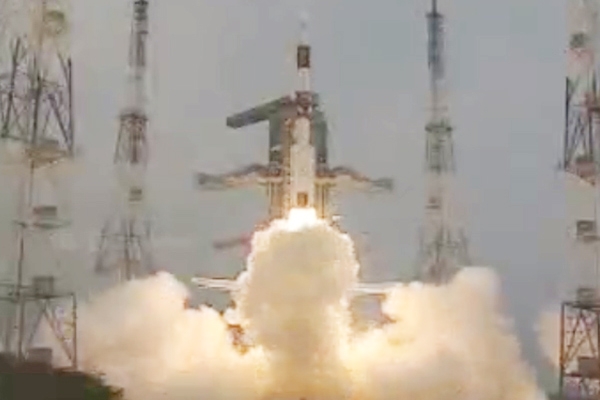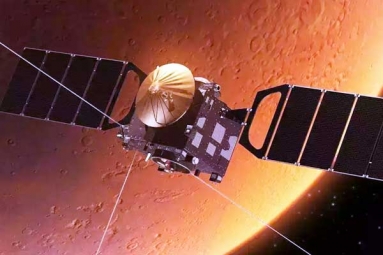
(Image source from: PSLV-C31 successfully launched from Sriharikota})
Following the successful launch of PSLV-C31 from the Satish Dhawan Space Centre (SDSC), SHAR, Sriharikota, it was successfully put into orbit by IRNSS-1E. PSLV-C31 is the fifth satellite of the Indian Regional Navigation Satellite System’s (IRNSS) constellation of seven satellites.
For the eleventh time, ‘XL’ version of PSLV was leveraged by PSLV-C31 With a liftoff mass of 1425 kg, IRNSS-1E carried navigation payload and ranging payload, according to a release from ISRO.
It was lifted off at 9.31 am from Second Launch Pad of the SDSC and around 19 minutes later PSLV-C31 was placed in precise orbit.
ISRO chairman A.S. Kiran Kumar said, "PSLV C-31 rocket has successfully launched IRNSS-IE satellite in orbit."
Many people eager to wait for the launch were unsatisfied as the sky was cloudy and thus, they could only get a glimpse of the soaring rocket for hardly seconds.
IRNSS-1E’s configuration is similar to that of IRNSS-1A, 1B, 1C and 1D launched in July 2013, April 2014, October 2014 and March 2015 by PSLV-C22, PSLV-C24, PSLV-C26 and PSLV-C27 respectively.
Also read: Successful Test Firing Of Agni-I Missile By India
IRNSS-1E payload consists of a C-band transponder that allows for accurate determination of the satellite range. It carries Corner Cube Retro Reflectors for laser ranging. Independent regional navigation satellite system, IRNSS was designed to offer proper position information service to users in India besides the region till 1,500 km from its boundary.
A position accuracy better than 20 metre in the primary service area is expected to be offered by the system.
-Sumana

















